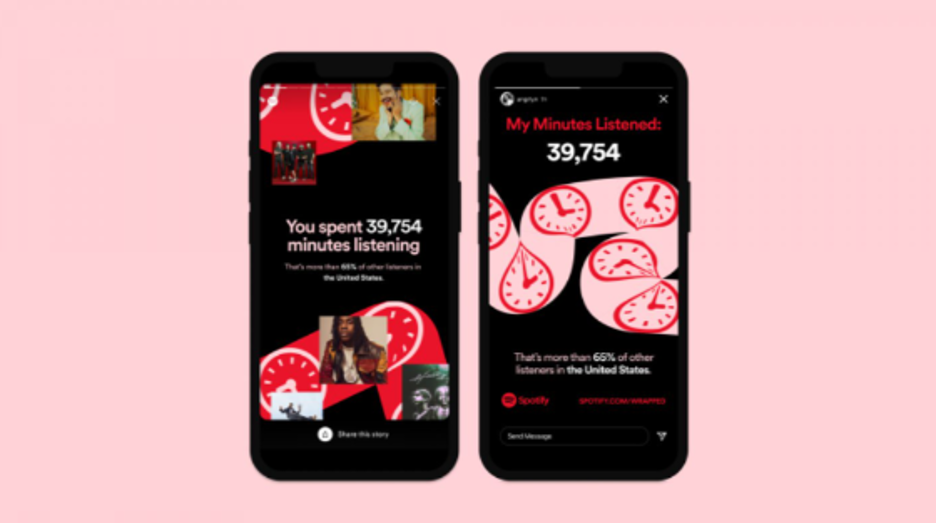News
Is Brand Storytelling Dead?
A Look Into Post-Pandemic Storytelling
Storytelling has always been an essential part of branding and marketing. However, since the pandemic, what consumers consider important has changed. As consumer values and interests shift, so does the need for brands to reevaluate their approach to purposeful and engaging storytelling.
Great stories can elevate and build brands. They can help connect companies with their audiences and create meaningful sentiments that resonate with their consumers. To make stories impactful and engaging, they have to be interesting. There are a handful of techniques that brands can use.
How Brands Can Effectively Use Storytelling
1. Create stories that are authentic and value-focused
Accenture research has shown that consumers’ purchasing behavior and decisions are largely influenced by brand values: 63% of consumers prefer purchasing from companies that are purpose-driven. Brands can leverage the art of storytelling to inform, engage, and entertain their audiences all while also communicating their values.
When it comes to consumer purchasing decisions, authenticity has also become increasingly important. More than ever, it’s critical for brands to demonstrate their values and be authentic and transparent in their initiatives.
A strong example of a brand creating an authentic response through storytelling is creative agency Imagination, which worked with the Detroit Youth Choir to support racial justice by making a new rendition of the song ‘Glory’.
Imagination explained that their “goal was to highlight the plights faced by the black community and speak directly to the hearts and minds of all Americans with a call for positive change. The Detroit Youth Choir (DYC) was the perfect partner for this vision.”
2. Turn stories into interactive experiences
There are many ways technology can facilitate more meaningful storytelling, such as the use of Virtual Reality (VR) and Augmented Reality (AR). These innovations pave the way for brands to create immersive, interactive experiences.
Hands-on interactions can deliver experiences that are memorable and successful. Many brands are pivoting toward the “experience economy”.
The experience economy centers on the concept that brands should engage with their consumers and create shared experiences, rather than simply marketing to them. This shift toward direct interactions makes sense when you consider, for example, that 72% of Millennials prefer spending money on experiences over material products.
The pandemic lockdowns challenged many marketers to re-evaluate their strategies. It also shed light on what consumers truly find important. There was a lot of focus placed on facilitating feelings of community and collaboration, with virtual environments used to recreate concerts, events, social gatherings, etc. Much of peoples’ interests and priorities centered on activities and feelings of connection and collaboration, rather than meaningless or materialistic consumption.
Technology has provided new ways for companies to deliver immersive experiences, such as the interactive fan displays used by the NBA during quarantine. Some brands capitalize on these opportunities by creating stories that place the consumer center stage.
For instance, Imagination worked with Jaguar and Land Rover to deliver immersive VR experiences for vehicle launches. For the concept launch of the Jaguar I-PACE, the brand’s first electric car, Imagination staged a real-time, multi-user VR experience:
3. Strategically incorporate facts and data
The art of storytelling hinges on the ability to evoke certain emotions from audiences and establish a connection. Well-presented data and statistics can help create more persuasive, hard-hitting stories.
They can help build a compelling and convincing narrative. However, it’s important to use them with carefully. You don’t want to overwhelm readers or bore them with tons of dry research and numbers.
Rather, you can pick a select set of facts that support your claims or help drive your point and build empathy. Adding data and facts can help illuminate your story and highlight insights that resonate with your audience.
To be memorable, stories should be relatively simple and straightforward, which means ensuring that you’re only incorporating data in a way that helps readers better understand the story.
Spotify is an excellent example of a company using data-led brand storytelling. Each year, the music streaming platform releases Spotify Wrapped, a summary of music highlights for each customer:

The roundup encapsulates each user’s streaming history for the past year, delivering data on their favorite artists, most-listened to songs, time spent listening, and more. Showcasing customers’ listening “story” back to them is an effective way to provide a personalized experience and build engagement. It’s also a helpful promotional strategy as users often share their Spotify Wrapped roundups on their social media.
The key to effectively leveraging facts and statistics in an engaging way is to turn data into insight. A major advantage of today’s digital-first marketing environment is that technology makes it easier to gather and analyze tons of data to interpret and use in meaningful ways.
At RedSky Strategy, we believe storytelling is fundamental and an art form for pivoting brands to the next level. We use Indaba to leverage storytelling to position (or reposition) brands. We also use HumanSight™ to look for the human connections and insights that provide impact and staying power.
When it comes to effective storytelling in marketing, it’s important to put the story first, then consider the channel of engagement second. Creating an emotionally engaging story should be about tapping into consumers’ interests, desires, and values that your audience is inclined to remember and respond to.
As we move forward, storytelling will continue to be important. However, the stories and the way the stories are told are changing. The new normal will require stories to be truthful, and we can expect technology to play a pivotal role in delivering brand stories.
Interested in working with RedSky Strategy? We look forward to learning how we can help your brand leverage Indaba and HumanSight™ to create meaningful stories your audience will resonate with.

